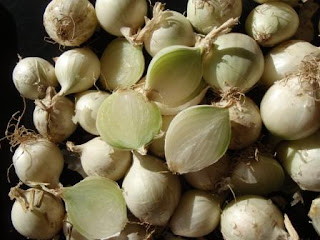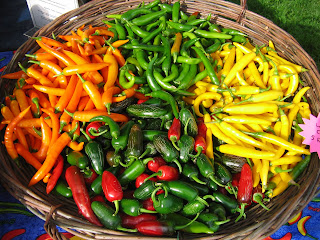How to make a man cry
I have found the perfect reason to cry. If you are going to cry, it had better be for a good reason, and one good reason is the new-season white pearl onions from the Marlborough Farmers' Market.
If it is from the farmers' market, that must mean it has been grown in our region (good to keep the money and jobs local), it must be sold by the producer (tick that box – Steve is the man who made me cry), and it must be edible (that's my favourite part).
For a sweet little onion, the white pearl packs a punch, reducing a grown man like me to tears in a matter of minutes as I stood at the bench peeling them in preparation for the potato salad.
The white onion is popular raw or sauteed in salads, as it has a higher moisture content than normal onions and is somewhat sweeter. It is also just as good roasted in its skin (ahh, no more crying).
The onion has been traced back as far as the Bronze Age and was worshipped by the ancient Egyptians, and eaten by the Israelites during their bondage in Egypt. Onions were rubbed over the muscles of Roman gladiators, used to pay rent in the Middle Ages instead of money, and were highly praised for their culinary contributions.
No good kitchen today would be without onions in the pantry, so how do we enjoy their oniony goodness with reducing ourselves to tears?
Here is the easy of why we cry: when you cut into an onion, its ruptured cells release all sorts of goodies like allinase enzymes and amino acid sulfoxides. The former breaks the latter down into sulfenic acids.The sulfenic acids, unstable bunch that they are, spontaneously rearrange into thiosulfinates, which produce a pungent odour and get the blame for our tears. But there is more. The acids are also converted by the LF-synthase enzyme into a gas called syn-propanethial-S-oxide, also known as the Lachrymatory (crying) Factor. Syn-propanethial-S-oxide moves through the air and reaches our eyes. The first part of the eye it meets, the cornea, is populated by autonomic motor fibres that lead to the lachrymal glands. When syn-propanethial-S-oxide is detected, all the fibres in the cornea start firing and tell the lachrymal glands to wash the irritant away.
Our eyes automatically start blinking and producing tears, which flush the irritant away. Of course, our reaction to burning eyes is often to rub them, which only makes things worse, since our hands also have syn-propanethial-S-oxide on them. It only takes about 15 seconds to start crying after the first cut. That's all the time needed for the syn-propanethial-S-oxide formation to peak.
WARM POTATO AND ONION SALADAnd you thought onions were just another simple vegetable! So bear up and just slice into them, and remember that Steve, who grew the onions, has to pick and harvest tonnes of them at a time. A little bit of Lachrymatory Factor never hurt anybody.
600g potatoes, unpeeled
4 bacon rashers (Premium Game do great wild pork bacon)
5 Tblsp Marlborough olive oil
1-2 medium-sized sweet onions, sliced into rings
1-2 garlic cloves, minced (Marlborough, of course)
1 cup white wine vinegar
1 Tblsp wholegrain mustard
Marlborough flaky salt and freshly ground black pepper to taste
Chopped fresh parsley or other soft herbs, chervil, chives etc
Cook potatoes in a large pot of boiling salted water just until tender (about 20 minutes); do not overcook.
Meanwhile, melt the butter in a large non-stick frying pan over a medium-low heat. Add the bacon, onion and garlic. Cook until the onion is golden and caramelised.
Whisk together the vinegar, mustard and oil. Season with salt and pepper.
Add the onion and bacon and chopped herbs to the warm potatoes. Pour over the dressing and toss the potatoes to coat.



Comments
Post a Comment